Identifying Spatial Priority of Ecological Restoration Dependent on Landscape Quality Trends in Metropolitan Areas
Abstract
:1. Introduction
2. Study Site
3. Materials and Methods
3.1. Data and Processing
3.2. Landscape Quality Index System
- Landscape area indicator (LAI)
- 2.
- Landscape structure indicator (LSI)
- 3.
- Landscape function index (LFI)
3.3. Tendency of Landscape Quality and Its Relationship to Land Cover Conversion
3.4. Ecological Restoration Priorities
4. Results
4.1. Changes in Land Cover
4.2. Grading of Landscape Quality Trends
4.3. Relationship between Land Cover and Landscape Quality Indicators
4.4. Prioritization and Classification of Ecological Restoration
5. Discussion
5.1. Trends of Landscape Quality in Metropolitan Areas
5.2. Drivers of Land Cover Transition on Landscape Quality
5.3. The Trade-Off between Ecological Restoration and Urban Development
5.4. Limitations and Future Research
6. Conclusions
Supplementary Materials
Author Contributions
Funding
Acknowledgments
Conflicts of Interest
References
- Grimm, N.B.; Faeth, S.H.; Golubiewski, N.E.; Redman, C.L.; Wu, J.G.; Bai, X.M.; Briggs, J.M. Global change and the ecology of cities. Science 2008, 319, 756–760. [Google Scholar] [CrossRef] [PubMed] [Green Version]
- Sun, L.; Chen, J.; Li, Q.; Huang, D. Dramatic uneven urbanization of large cities throughout the world in recent decades. Nat. Commun. 2020, 11, 5366. [Google Scholar] [CrossRef] [PubMed]
- Squires, G. Urban Sprawl: Causes, Consequences and Policy Responses; Urban Institute Press: Washington, DC, USA, 2002. [Google Scholar]
- Foley, J.A.; DeFries, R.; Asner, G.P.; Barford, C.; Bonan, G.; Carpenter, S.R.; Chapin, F.S.; Coe, M.T.; Daily, G.C.; Gibbs, H.K.; et al. Global consequences of land use. Science 2005, 309, 570–574. [Google Scholar] [CrossRef] [Green Version]
- Yamashita, S.; Sekine, K. Some studies on the earth’s surface conditions relating to the urban heat island. Energy Build. 1990, 15, 279–288. [Google Scholar] [CrossRef]
- Khan, I.; Hou, F.; Le, H.P.; Ali, S.A. Do natural resources, urbanization, and value-adding manufacturing affect environmental quality? Evidence from the top ten manufacturing countries. Resour. Policy 2021, 72, 102109. [Google Scholar] [CrossRef]
- Kc, S.; Shrestha, S.; Ninsawat, S.; Chonwattana, S. Predicting flood events in Kathmandu Metropolitan City under climate change and urbanisation. J. Environ. Manag. 2021, 281, 111894. [Google Scholar] [CrossRef]
- Millennium Ecosystem Assessment. Ecosystems and Human Well-Being: Biodiversity Synthesis; World Resources Institute: Washington, DC, USA, 2005; Available online: https://www.biodiversitylibrary.org/item/119291 (accessed on 21 November 2021).
- Sargolini, M. Environmental and Landscape Quality. In Urban Landscapes: Environmental Networks and Quality of Life; Sargolini, M., Ed.; Springer: Milan, Italy, 2013; pp. 11–17. [Google Scholar] [CrossRef]
- Vizzari, M. Spatial modelling of potential landscape quality. Appl. Geogr. 2011, 31, 108–118. [Google Scholar] [CrossRef]
- Wang, W.J.; Wu, T.; Li, Y.Z.; Xie, S.L.; Han, B.L.; Zheng, H.; Ouyang, Z.Y. Urbanization Impacts on natural habitat and ecosystem services in the Guangdong-Hong Kong-Macao “Megacity”. Sustainability 2020, 12, 6675. [Google Scholar] [CrossRef]
- Nilsson, C.; Grelsson, G. The Fragility of Ecosystems: A Review. J. Appl. Ecol. 1995, 32, 677–692. [Google Scholar] [CrossRef]
- Nagendra, H.; Nagendran, S.; Paul, S.; Pareeth, S. Graying, greening and fragmentation in the rapidly expanding Indian city of Bangalore. Landsc. Urban Plan. 2012, 105, 400–406. [Google Scholar] [CrossRef]
- Rebelo, A.G.; Holmes, P.M.; Dorse, C.; Wood, J. Impacts of urbanization in a biodiversity hotspot: Conservation challenges in Metropolitan Cape Town. S. Afr. J. Bot. 2011, 77, 20–35. [Google Scholar] [CrossRef] [Green Version]
- Cassatella, C.; Voghera, A. Indicators Used for Landscape. In Landscape Indicators: Assessing and Monitoring Landscape Quality; Cassatella, C., Peano, A., Eds.; Springer: Dordrecht, The Netherlands, 2011; pp. 31–46. [Google Scholar] [CrossRef]
- Luo, M.; Li, T. Spatial and temporal analysis of landscape ecological quality in Yulin. Environ. Technol. Innov. 2021, 23, 101700. [Google Scholar] [CrossRef]
- Peng, S.; Li, S. Scale relationship between landscape pattern and water quality in different pollution source areas: A case study of the Fuxian Lake watershed, China. Ecol. Indic. 2021, 121, 107136. [Google Scholar] [CrossRef]
- Darvishi, A.; Yousefi, M.; Marull, J. Modelling landscape ecological assessments of land use and cover change scenarios. Application to the Bojnourd Metropolitan Area (NE Iran). Land Use Policy 2020, 99, 105098. [Google Scholar] [CrossRef]
- Wang, M.; Ma, Y.-f.; You, X.-y. An innovative approach to identify environmental variables with conservation priorities in habitat patches. J. Environ. Manag. 2021, 292, 112788. [Google Scholar] [CrossRef] [PubMed]
- Zhang, Z.; Meerow, S.; Newell, J.P.; Lindquist, M. Enhancing landscape connectivity through multifunctional green infrastructure corridor modeling and design. Urban For. Urban Green. 2019, 38, 305–317. [Google Scholar] [CrossRef]
- Modica, G.; Praticò, S.; Laudari, L.; Ledda, A.; Di Fazio, S.; De Montis, A. Implementation of multispecies ecological networks at the regional scale: Analysis and multi-temporal assessment. J. Environ. Manag. 2021, 289, 112494. [Google Scholar] [CrossRef]
- Uroosa; Kazmi, S.S.U.H.; Rahman, M.S.; Xu, H. Use of biological trait analysis of periphytic protozoan assemblages for evaluating effects of harmful algal blooms on ecological quality status in marine ecosystem. Mar. Pollut. Bull. 2021, 164, 112083. [Google Scholar] [CrossRef]
- López, E.; Patiño, R.; Vázquez-Sauceda, M.L.; Pérez-Castañeda, R.; Arellano-Méndez, L.U.; Ventura, R.; Heyer, L. Water quality and ecological risk assessment of intermittent streamflow through mining and urban areas of San Marcos River sub-basin, Mexico. Environ. Nanotechnol. Monit. Manag. 2020, 14, 100369. [Google Scholar] [CrossRef]
- Liang, D.; Wang, Q.; Wei, N.; Tang, C.; Sun, X.; Yang, Y. Biological indicators of ecological quality in typical urban river-lake ecosystems: The planktonic rotifer community and its response to environmental factors. Ecol. Indic. 2020, 112, 106127. [Google Scholar] [CrossRef]
- Huang, L.; Wang, J.; Fang, Y.; Zhai, T.; Cheng, H. An integrated approach towards spatial identification of restored and conserved priority areas of ecological network for implementation planning in metropolitan region. Sustain. Cities Soc. 2021, 69, 102865. [Google Scholar] [CrossRef]
- Boori, M.S.; Choudhary, K.; Paringer, R.; Kupriyanov, A. Eco-environmental quality assessment based on pressure-state-response framework by remote sensing and GIS. Remote Sens. Appl. Soc. Environ. 2021, 23, 100530. [Google Scholar] [CrossRef]
- Wang, L.; Li, Z.; Wang, D.; Chen, J.; Liu, Y.; Nie, X.; Zhang, Y.; Ning, K.; Hu, X. Unbalanced social-ecological development within the Dongting Lake basin: Inspiration from evaluation of ecological restoration projects. J. Clean. Prod. 2021, 315, 128161. [Google Scholar] [CrossRef]
- Shen, J.; Guo, X.; Wang, Y. Identifying and setting the natural spaces priority based on the multi-ecosystem services capacity index. Ecol. Indic. 2021, 125, 107473. [Google Scholar] [CrossRef]
- Li, Y.-Y.; Zhang, Y.-Z.; Jiang, Z.-Y.; Guo, C.-X.; Zhao, M.-Y.; Yang, Z.-G.; Guo, M.-Y.; Wu, B.-Y.; Chen, Q.-L. Integrating morphological spatial pattern analysis and the minimal cumulative resistance model to optimize urban ecological networks: A case study in Shenzhen City, China. Ecol. Process. 2021, 10, 63. [Google Scholar] [CrossRef]
- Ju, H.; Niu, C.; Zhang, S.; Jiang, W.; Zhang, Z.; Zhang, X.; Yang, Z.; Cui, Y. Spatiotemporal patterns and modifiable areal unit problems of the landscape ecological risk in coastal areas: A case study of the Shandong Peninsula, China. J. Clean. Prod. 2021, 310, 127522. [Google Scholar] [CrossRef]
- Dindaroglu, T. Determination of ecological networks for vegetation connectivity using GIS & AHP technique in the Mediterranean degraded karst ecosystems. J. Arid. Environ. 2021, 188, 104385. [Google Scholar] [CrossRef]
- Das, A.; Basu, T. Assessment of peri-urban wetland ecological degradation through importance-performance analysis (IPA): A study on Chatra Wetland, India. Ecol. Indic. 2020, 114, 106274. [Google Scholar] [CrossRef]
- Yang, C.; Zhang, C.; Li, Q.; Liu, H.; Gao, W.; Shi, T.; Liu, X.; Wu, G. Rapid urbanization and policy variation greatly drive ecological quality evolution in Guangdong-Hong Kong-Macau Greater Bay Area of China: A remote sensing perspective. Ecol. Indic. 2020, 115, 106373. [Google Scholar] [CrossRef]
- Figueira Branco, E.R.; Rosa dos Santos, A.; Macedo Pezzopane, J.E.; Banhos dos Santos, A.; Alexandre, R.S.; Bernardes, V.P.; da Silva, R.G.; de Souza, K.B.; Moura, M.M. Space-time analysis of vegetation trends and drought occurrence in domain area of tropical forest. J. Environ. Manag. 2019, 246, 384–396. [Google Scholar] [CrossRef]
- Firozjaei, M.K.; Kiavarz, M.; Homaee, M.; Arsanjani, J.J.; Alavipanah, S.K. A novel method to quantify urban surface ecological poorness zone: A case study of several European cities. Sci. Total. Environ. 2021, 757, 143755. [Google Scholar] [CrossRef] [PubMed]
- Faisal, A.-A.; Kafy, A.-A.; Al Rakib, A.; Akter, K.S.; Jahir, D.M.A.; Sikdar, M.S.; Ashrafi, T.J.; Mallik, S.; Rahman, M.M. Assessing and predicting land use/land cover, land surface temperature and urban thermal field variance index using Landsat imagery for Dhaka Metropolitan area. Environ. Chall. 2021, 4, 100192. [Google Scholar] [CrossRef]
- Cortelezzi, A.; Barranquero, R.S.; Marinelli, C.B.; Fernández San Juan, M.R.; Cepeda, R.E. Environmental diagnosis of an urban basin from a social-ecological perspective. Sci. Total. Environ. 2019, 678, 267–277. [Google Scholar] [CrossRef] [PubMed]
- Wang, Y.; Huang, J.; Chen, C.; Shen, J.; Sheng, S. The cooling intensity dependent on landscape complexity of green infrastructure in the metropolitan area. J. Environ. Eng. Landsc. Manag. 2021, 29, 318–336. [Google Scholar] [CrossRef]
- Yue, W.; Chen, Y.; Zhang, Q.; Liu, Y. Spatial Explicit Assessment of Urban Vitality Using Multi-Source Data: A Case of Shanghai, China. Sustainability 2019, 11, 638. [Google Scholar] [CrossRef] [Green Version]
- Meligrana, J.; Ren, W.; Zhang, Z.; Anderson, B. Planning a mega-city’s future: An evaluation of Shanghai’s municipal land-use plan. Town Plan. Rev. 2008, 79, 267–293. [Google Scholar] [CrossRef]
- Bean, W.T.; Sanderson, E.W. Using a spatially explicit ecological model to test scenarios of fire use by Native Americans: An example from the Harlem Plains, New York, NY, USA. Ecol. Model. 2008, 211, 301–308. [Google Scholar] [CrossRef]
- Department of City Planning. Projected Population 2010–2040 Summary. Available online: https://data.cityofnewyork.us/City-Government/Projected-Population-2010-2040-Summary/ph5g-sr3v (accessed on 21 November 2021).
- Tokyo Population 2021. Available online: https://worldpopulationreview.com/world-cities/tokyo-population (accessed on 21 November 2021).
- Feng, R.; Wang, F.; Wang, K.; Xu, S. Quantifying influences of anthropogenic-natural factors on ecological land evolution in mega-urban agglomeration: A case study of Guangdong-Hong Kong-Macao greater Bay area. J. Clean. Prod. 2021, 283, 125304. [Google Scholar] [CrossRef]
- Bhatta, B. Analysis of urban growth pattern using remote sensing and GIS: A case study of Kolkata, India. Int. J. Remote. Sens. 2009, 30, 4733–4746. [Google Scholar] [CrossRef]
- Usman, M.; Liedl, R.; Shahid, M.A.; Abbas, A. Land use/land cover classification and its change detection using multi-temporal MODIS NDVI data. J. Geogr. Sci. 2015, 25, 1479–1506. [Google Scholar] [CrossRef]
- Pontius, R.G.; Shusas, E.; McEachern, M. Detecting important categorical land changes while accounting for persistence. Agric. Ecosyst. Environ. 2004, 101, 251–268. [Google Scholar] [CrossRef]
- Lü, D.; Gao, G.; Lü, Y.; Xiao, F.; Fu, B. Detailed land use transition quantification matters for smart land management in drylands: An in-depth analysis in Northwest China. Land Use Policy 2020, 90, 104356. [Google Scholar] [CrossRef]
- Braimoh, A.K. Random and systematic land-cover transitions in northern Ghana. Agric. Ecosyst. Environ. 2006, 113, 254–263. [Google Scholar] [CrossRef]
- Landsat Missions. Landsat Enhanced Vegetation Index. Available online: https://www.usgs.gov/landsat-missions/landsat-enhanced-vegetation-index (accessed on 21 November 2021).
- Gobron, N.; Pinty, B.; Verstraete, M.; Widlowski, J.L. Advanced vegetation indices optimized for up-coming sensors: Design, performance, and applications. IEEE Trans. Geosci. Remote Sens. 2000, 38, 2489–2505. [Google Scholar] [CrossRef]
- McGarigal, K.S.; Marks, B.J. FRAGSTATS: Spatial Pattern Analysis Program for Categorical Maps; Department of Agriculture, Forest Service, Pacific Northwest Research Station: Corvallis, OR, USA, 1995; p. 122. [CrossRef]
- Jia, Y.; Tang, L.; Xu, M.; Yang, X. Landscape pattern indices for evaluating urban spatial morphology—A case study of Chinese cities. Ecol. Indic. 2019, 99, 27–37. [Google Scholar] [CrossRef]
- Alphan, H. Multi-temporal analysis of urbanisation patterns as coastal development indicators: Eastern Mediterranean coast of Turkey. Ecol. Indic. 2021, 121, 106994. [Google Scholar] [CrossRef]
- Cengiz, S.; Görmüş, S.; Oğuz, D. Analysis of the urban growth pattern through spatial metrics; Ankara City. Land Use Policy 2021, 112, 105812. [Google Scholar] [CrossRef]
- Leemhuis, C.; Thonfeld, F.; Näschen, K.; Steinbach, S.; Muro, J.; Strauch, A.; López, A.; Daconto, G.; Games, I.; Diekkrüger, B. Sustainability in the food-water-ecosystem nexus: The role of land use and land cover change for water resources and ecosystems in the Kilombero Wetland, Tanzania. Sustainability 2017, 9, 1513. [Google Scholar] [CrossRef] [Green Version]
- Titova, J.; Baltrėnaitė, E. Physical and chemical properties of biochar produced from sewage sludge compost and plants biomass, fertilized with that compost, important for soil improvement. Waste Biomass Valorization 2021, 12, 3781–3800. [Google Scholar] [CrossRef]
- Vancutsem, C.; Ceccato, P.; Dinku, T.; Connor, S.J. Evaluation of MODIS land surface temperature data to estimate air temperature in different ecosystems over Africa. Remote Sens. Environ. 2010, 114, 449–465. [Google Scholar] [CrossRef]
- Xu, H.; Wang, Y.; Guan, H.; Shi, T.; Hu, X. Detecting ecological changes with a Remote Sensing Based Ecological Index (RSEI) produced time series and change vector analysis. Remote Sens. 2019, 11, 2345. [Google Scholar] [CrossRef] [Green Version]
- Boori, M.S.; Choudhary, K.; Paringer, R.; Kupriyanov, A. Spatiotemporal ecological vulnerability analysis with statistical correlation based on satellite remote sensing in Samara, Russia. J. Environ. Manag. 2021, 285, 112138. [Google Scholar] [CrossRef] [PubMed]
- Abson, D.J.; Dougill, A.J.; Stringer, L. Using Principal Component Analysis for information-rich socio-ecological vulnerability mapping in Southern Africa. Appl. Geogr. 2012, 35, 515–524. [Google Scholar] [CrossRef]
- Gocic, M.; Trajkovic, S. Analysis of changes in meteorological variables using Mann-Kendall and Sen’s slope estimator statistical tests in Serbia. Glob. Planet. Chang. 2013, 100, 172–182. [Google Scholar] [CrossRef]
- da Silva, R.M.; Santos, C.A.G.; Moreira, M.; Corte-Real, J.; Silva, V.C.L.; Medeiros, I.C. Rainfall and river flow trends using Mann–Kendall and Sen’s slope estimator statistical tests in the Cobres River basin. Nat. Hazards 2015, 77, 1205–1221. [Google Scholar] [CrossRef]
- Forthofer, R.N.; Lehnen, R.G. Rank Correlation Methods. In Public Program Analysis: A New Categorical Data Approach; Forthofer, R.N., Lehnen, R.G., Eds.; Springer: Boston, MA, USA, 1981; pp. 146–163. [Google Scholar] [CrossRef]
- Hamed, K.H. Trend detection in hydrologic data: The Mann-Kendall trend test under the scaling hypothesis. J. Hydrol. 2008, 349, 350–363. [Google Scholar] [CrossRef]
- Warren, J. Statistical methods for environmental pollution monitoring. Technometrics 1988, 30, 348. [Google Scholar] [CrossRef]
- Das, S.; Sangode, S.J.; Kandekar, A. Recent decline in streamflow and sediment discharge in the Godavari basin, India (1965–2015). Catena 2021, 206, 105537. [Google Scholar] [CrossRef]
- Mann, H.B. Nonparametric tests against trend. Econometrica 1945, 13, 245–259. [Google Scholar] [CrossRef]
- Sen, P.K. Estimates of the regression coefficient based on Kendall’s Tau. J. Am. Stat. Assoc. 1968, 63, 1379–1389. [Google Scholar] [CrossRef]
- Pohlert, T. Trend: Non-Parametric Trend Tests and Change-Point Detection. Available online: https://cran.r-project.org/web/packages/trend/index.html (accessed on 21 November 2021).
- Hijmans, R.J.; van Etten, J.; Sumner, M.; Cheng, J.; Baston, D.; Bevan, A.; Bivand, R.; Busetto, L.; Canty, M.; Fasoli, B.; et al. Raster: Geographic Data Analysis and Modeling. Available online: https://cran.r-project.org/web/packages/raster/index.html (accessed on 21 November 2021).
- Hijmans, R.J.; Bivand, R.; Forner, K.; Ooms, J.; Pebesma, E. Terra: Spatial Data Analysis. Available online: https://cran.r-project.org/web/packages/terra/index.html (accessed on 21 November 2021).
- Pudong Shanghai. Lin-gang Special Area. 2021. Available online: http://english.pudong.gov.cn/2021-04/14/c_88754.htm (accessed on 21 November 2021).
- Alberti, M. The effects of urban patterns on ecosystem function. Int. Reg. Sci. Rev. 2005, 28, 168–192. [Google Scholar] [CrossRef]
- Silva, J.S.; da Silva, R.M.; Santos, C.A.G. Spatiotemporal impact of land use/land cover changes on urban heat islands: A case study of Paço do Lumiar, Brazil. Build. Environ. 2018, 136, 279–292. [Google Scholar] [CrossRef]
- Kabisch, N.; Haase, D. Diversifying European agglomerations: Evidence of urban population trends for the 21st century. Popul. Space Place 2011, 17, 236–253. [Google Scholar] [CrossRef]
- Van Grunsven, L. Compact cities: Sustainable urban forms for developing countries. J. Hous. Built Environ. 2003, 18, 387–391. [Google Scholar] [CrossRef]
- Zhang, Z.; Liu, J.; Gu, X. Reduction of industrial land beyond Urban Development Boundary in Shanghai: Differences in policy responses and impact on towns and villages. Land Use Policy 2019, 82, 620–630. [Google Scholar] [CrossRef]
- Zhang, J.; Wu, F. China’s changing economic governance: Administrative annexation and the reorganization of local governments in the Yangtze River Delta. Reg. Stud. 2006, 40, 3–21. [Google Scholar] [CrossRef]
- Xu, J.; Yeh, A. Decoding urban land governance: State reconstruction in contemporary Chinese cities. Urban Stud. 2009, 46, 559–581. [Google Scholar] [CrossRef] [Green Version]
- Cox, K.R. The problem of metropolitan governance and the politics of scale. Reg. Stud. 2010, 44, 215–227. [Google Scholar] [CrossRef]
- Shen, J.; Wu, F. The suburb as a space of capital accumulation: The development of new towns in Shanghai, China. Antipode 2017, 49, 761–780. [Google Scholar] [CrossRef]
- Kovács, Z.; Harangozó, G.; Szigeti, C.; Koppány, K.; Kondor, A.C.; Szabó, B. Measuring the impacts of suburbanization with ecological footprint calculations. Cities 2020, 101, 102715. [Google Scholar] [CrossRef]
- Mieszkowski, P.; Mills, E.S. The causes of metropolitan suburbanization. J. Econ. Perspect. 1993, 7, 135–147. [Google Scholar] [CrossRef] [Green Version]
- Turner, B.L.; Kates, R.W.; Meyer, W.B. The earth as transformed by human actionin retrospect. Ann. Assoc. Am. Geogr. 1994, 84, 711–715. [Google Scholar] [CrossRef]
- Wu, Y.; Shan, L.; Guo, Z.; Peng, Y. Cultivated land protection policies in China facing 2030: Dynamic balance system versus basic farmland zoning. Habitat Int. 2017, 69, 126–138. [Google Scholar] [CrossRef]
- Wu, W.-B.; Ma, J.; Meadows, M.E.; Banzhaf, E.; Huang, T.-Y.; Liu, Y.-F.; Zhao, B. Spatio-temporal changes in urban green space in 107 Chinese cities (1990–2019): The role of economic drivers and policy. Int. J. Appl. Earth Obs. Geoinf. 2021, 103, 102525. [Google Scholar] [CrossRef]
- Trac, C.J.; Schmidt, A.H.; Harrell, S.; Hinckley, T.M. Is the returning farmland to forest program a success? Three case studies from Sichuan. Environ. Pract. 2013, 15, 350–366. [Google Scholar] [CrossRef] [PubMed] [Green Version]
- Olejniczak, M.J.; Spiering, D.J.; Potts, D.L.; Warren, R.J., II. Urban forests form isolated archipelagos. J. Urban Ecol. 2018, 4, juy007. [Google Scholar] [CrossRef] [Green Version]
- Mandal, M.; Das Chatterjee, N. Forest landscape and its ecological quality: A stepwise spatiotemporal evaluation through patch-matrix model in Jhargram District, West Bengal State, India. Reg. Sustain. 2021, 2, 164–176. [Google Scholar] [CrossRef]
- Andrén, O.; Lindberg, T.; Paustian, K.; Rosswall, T. Ecology of aralbe land—Organisms, carbon and nitrogen cycling. Biol. Conserv. 2001, 56, 243–244. [Google Scholar] [CrossRef]
- Kanianska, R. Agriculture and Its Impact on Land-Use, Environment, and Ecosystem Services. In Landscape Ecology. The Influences of Land Use and Anthropogenic Impacts of Landscape Creation; Almusaed, A., Ed.; InTech: Rijeka, Croatia, 2016; Available online: https://www.intechopen.com/chapters/51201 (accessed on 21 November 2021).
- Xiong, Z. Simulated effects of cropland expansion on seasonal temperatures over China. Phys. Chem. Earth Parts A/B/C 2015, 87-88, 108–118. [Google Scholar] [CrossRef]
- Yifru, B.A.; Chung, I.-M.; Kim, M.-G.; Chang, S.W. Assessing the effect of land/use land cover and climate change on water yield and groundwater recharge in East African Rift Valley using integrated model. J. Hydrol. Reg. Stud. 2021, 37, 100926. [Google Scholar] [CrossRef]
- Zhou, D.; Xiao, J.; Frolking, S.; Liu, S.; Zhang, L.; Cui, Y.; Zhou, G. Croplands intensify regional and global warming according to satellite observations. Remote Sens. Environ. 2021, 264, 112585. [Google Scholar] [CrossRef]
- Gounaridis, D.; Newell, J.P.; Goodspeed, R. The impact of urban sprawl on forest landscapes in Southeast Michigan, 1985–2015. Landsc. Ecol. 2020, 35, 1975–1993. [Google Scholar] [CrossRef]
- Yang, Y.-R.; Chang, C.-h. An Urban Regeneration Regime in China: A case study of urban redevelopment in Shanghai’s Taipingqiao area. Urban Stud. 2007, 44, 1809–1826. [Google Scholar] [CrossRef]
- Oyebode, O. Insight into Urban Renewal as a Strategic Remedy for the Built Environment in Nigeria. Eur. J. Adv. Eng. Technol. 2018, 5, 665–676. [Google Scholar]
- Almassi, B. Value disputes in urban ecological restoration: Lessons from the Chicago Wilderness. Stud. Hist. Philos. Sci. Part A 2021, 87, 93–100. [Google Scholar] [CrossRef]
- Fuller, M.R.; Doyle, M.W.; Strayer, D.L. Causes and consequences of habitat fragmentation in river networks. Ann. N. Y. Acad. Sci. 2015, 1355, 31–51. [Google Scholar] [CrossRef] [PubMed]
- Young, T. Restoration ecology: The new frontier, 2nd edition. Restor. Ecol. 2013, 21, 526. [Google Scholar] [CrossRef]
- Adjei Mensah, C. Destruction of Urban Green Spaces: A Problem beyond Urbanization in Kumasi City (Ghana). Am. J. Environ. Prot. 2014, 3, 1–9. [Google Scholar] [CrossRef] [Green Version]
- Wang, L.-J.; Ma, S.; Zhao, Y.-G.; Zhang, J.-C. Ecological restoration projects did not increase the value of all ecosystem services in Northeast China. For. Ecol. Manag. 2021, 495, 119340. [Google Scholar] [CrossRef]
- Li, L.; Gou, M.; Wang, N.; La, L.; Liu, C. Do ecological restoration programs reduce forest fragmentation? Case study of the Three Gorges Reservoir Area, China. Ecol. Eng. 2021, 172, 106410. [Google Scholar] [CrossRef]
- Zhou, Y.; Fu, D.; Lu, C.; Xu, X.; Tang, Q. Positive effects of ecological restoration policies on the vegetation dynamics in a typical ecologically vulnerable area of China. Ecol. Eng. 2021, 159, 106087. [Google Scholar] [CrossRef]
- Klaus, V.H.; Kiehl, K. A conceptual framework for urban ecological restoration and rehabilitation. Basic Appl. Ecol. 2021, 52, 82–94. [Google Scholar] [CrossRef]
- Hobbs, R.J.; Arico, S.; Aronson, J.; Baron, J.S.; Bridgewater, P.; Cramer, V.A.; Epstein, P.R.; Ewel, J.J.; Klink, C.A.; Lugo, A.E.; et al. Novel ecosystems: Theoretical and management aspects of the new ecological world order. Glob. Ecol. Biogeogr. 2006, 15, 1–7. [Google Scholar] [CrossRef]
- Bullock, J.M.; Aronson, J.; Newton, A.C.; Pywell, R.F.; Rey-Benayas, J.M. Restoration of ecosystem services and biodiversity: Conflicts and opportunities. Trends Ecol. Evol. 2011, 26, 541–549. [Google Scholar] [CrossRef] [PubMed]
- Holl, K.D.; Howarth, R.B. Paying for Restoration. Restor. Ecol. 2000, 8, 260–267. [Google Scholar] [CrossRef]
- Koley, S.; Chockalingam, J. Sentinel 1 and Sentinel 2 for cropland mapping with special emphasis on the usability of textural and vegetation indices. Adv. Space Res. 2021, 19, 1140. [Google Scholar] [CrossRef]
- Wu, L.; Yin, Y.; Jiang, X.; Cheng, T.C.E. Pan-sharpening based on multi-objective decision for multi-band remote sensing images. Pattern Recognit. 2021, 118, 108022. [Google Scholar] [CrossRef]
- Sun, Q.; Zhang, P.; Jiang, W.; Qu, W.; Sun, Y.; Sun, D. Navigating local environment and scientific knowledge in dryland social-ecological systems through linking ecological policy-household interactions with land surface dynamics. Land Use Policy 2022, 112, 105863. [Google Scholar] [CrossRef]
- Haskell, L.; Bonnedahl, K.J.; Stål, H.I. Social innovation related to ecological crises: A systematic literature review and a research agenda for strong sustainability. J. Clean. Prod. 2021, 325, 129316. [Google Scholar] [CrossRef]
- Shrinkhal, R. Economics, Technology, and Environmental Protection: A Critical Analysis of Phytomanagement. In Phytomanagement of Polluted Sites; Pandey, V.C., Bauddh, K., Eds.; Elsevier: Amsterdam, The Netherlands, 2019; Chapter 22; pp. 569–580. [Google Scholar]
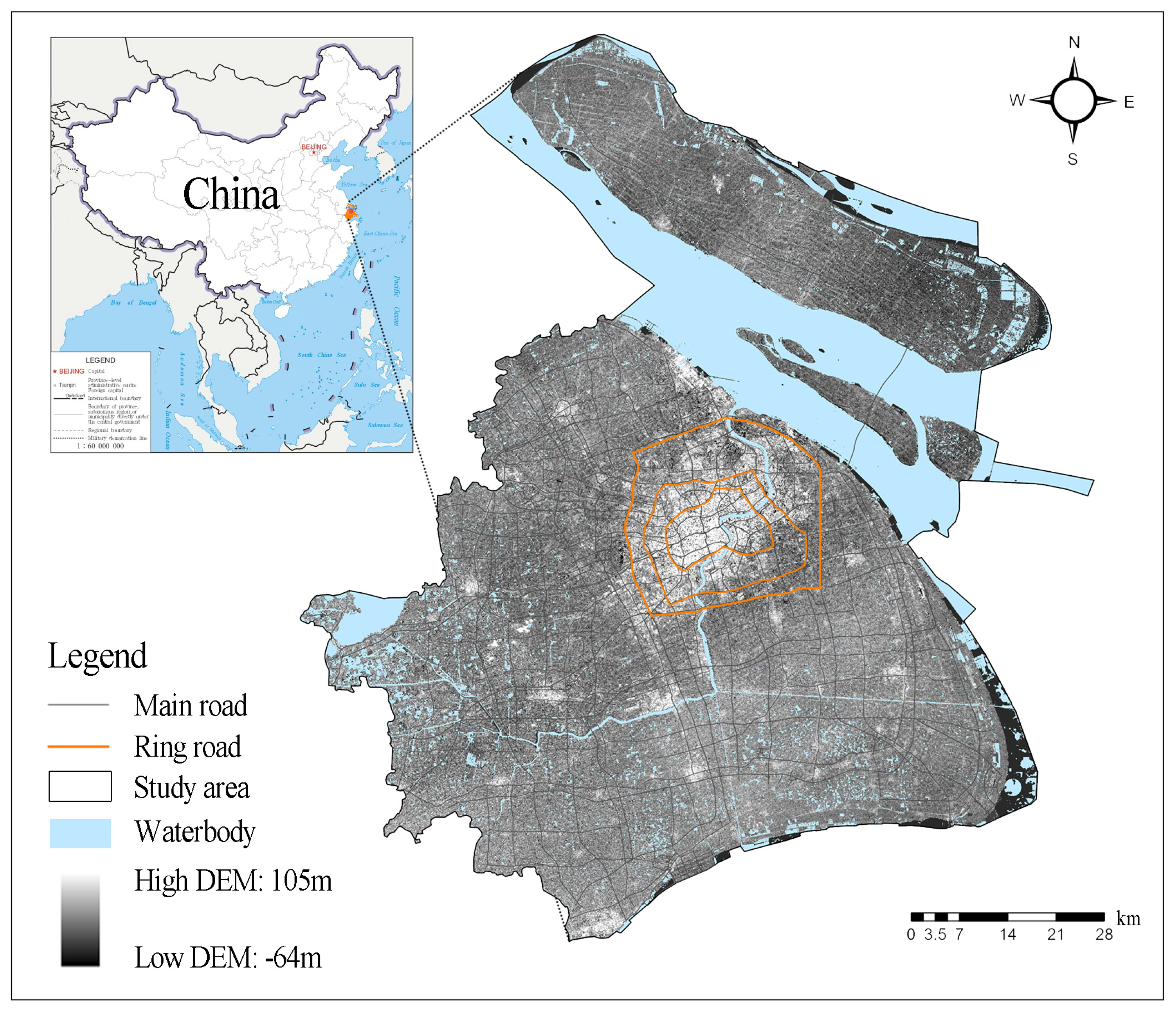

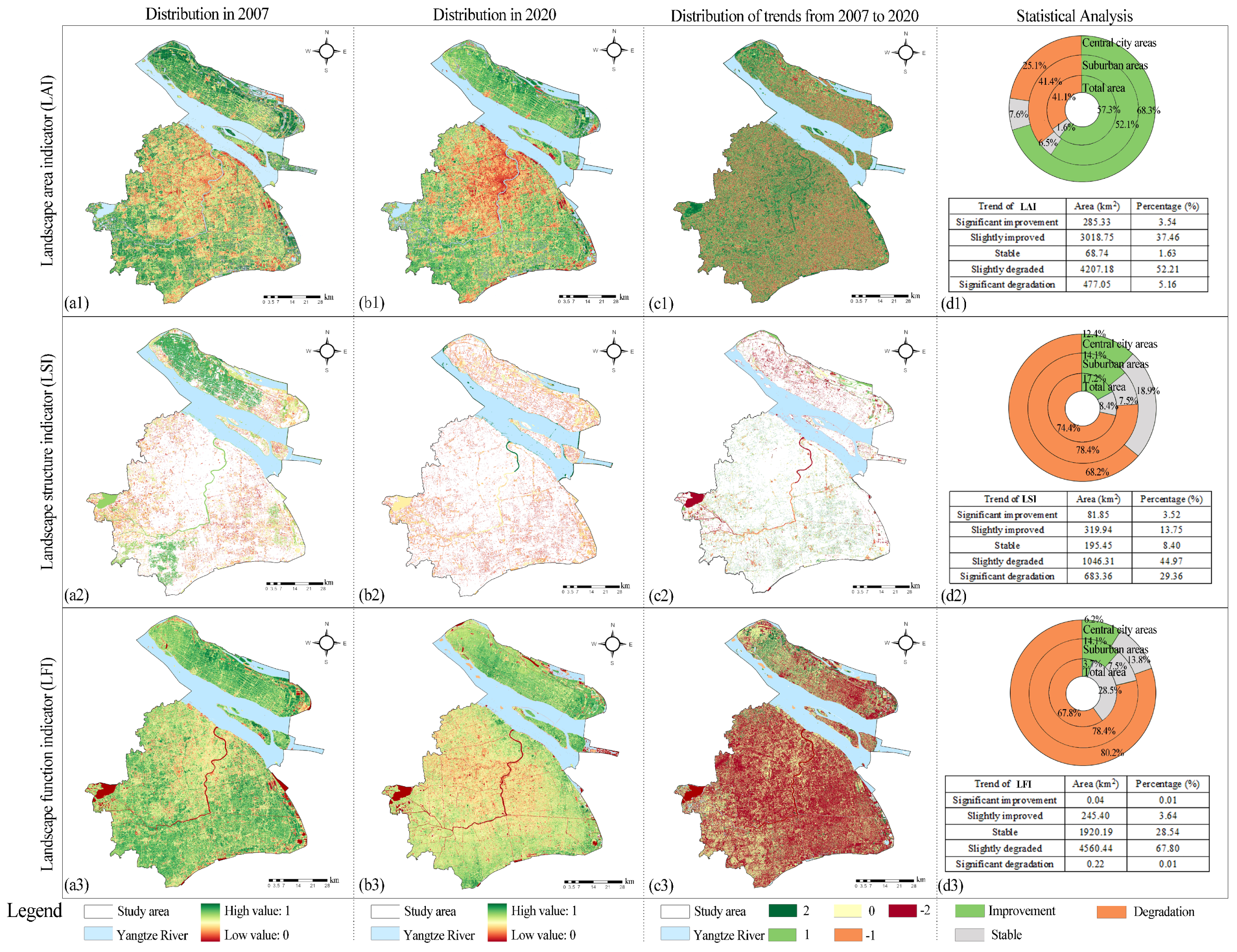

| Name | Date | Source/Resolution (m) | Pro-Processing |
|---|---|---|---|
| DEM | —— | ASTER GDEM/30 m | Data were pre-processed by Radiometric Calibration and FLAASH Atmospheric Correction tools in ENVI 5.3. |
| HD imagery | Same year as remote sensing images | Google Earth Pro/1 m | |
| RSI | 8 September 2005 | Landsat 5/30 m | |
| RSI | 28 July 2007 | Landsat 5/30 m | |
| RSI | 19 September 2009 | Landsat 5/30 m | |
| RSI | 29 August 2013 | Landsat 8/30 m | |
| RSI | 3 August 2015 | Landsat 8/30 m | |
| RSI | 27 July 2016 | Landsat 8/30 m | |
| RSI | 24 August 2017 | Landsat 8/30 m | |
| RSI | 29 July 2019 | Landsat 8/30 m | |
| RSI | 16 August 2020 | Landsat 8/30 m |
| From 2007 | To 2020 | Area in 2007 (km2) | Proportion 1 (%) | |||||
|---|---|---|---|---|---|---|---|---|
| Water Bodies | Built-Up Area | Cropland | Forest | Grassland | Barren Land | |||
| Water bodies | 1257.42 | 187.89 | 89.78 | 67.79 | 5.33 | 2.67 | 1612.24 | 21.92 |
| Built-up area | 47.84 | 2967.92 | 245.10 | 108.93 | 9.50 | 5.83 | 3372.48 | 12.37 |
| Cropland | 68.96 | 748.96 | 542.34 | 228.75 | 20.24 | 8.09 | 1624.32 | 66.18 |
| Forest | 102.99 | 506.18 | 467.81 | 202.21 | 12.51 | 4.29 | 1295.39 | 84.44 |
| Grassland | 8.36 | 41.24 | 10.93 | 14.36 | 2.46 | 0.54 | 81.12 | 92.98 |
| Barren land | 13.77 | 37.65 | 5.99 | 8.50 | 1.40 | 0.58 | 70.91 | 94.92 |
| Area in 2020 (km2) | 1499.34 | 4489.84 | 1361.95 | 630.54 | 51.44 | 22.00 | — | — |
| Proportion 2 (%) | 83.87 | 66.10 | 39.82 | 32.07 | 4.78 | 2.64 | — | — |
| Land Cover in 2007 | Land Cover in 2020 | Area Percentage (%) | |||||
|---|---|---|---|---|---|---|---|
| 2 Level | 1 Level | 0 Level | −1 Level | −2 Level | |||
| Built-up area (3372.48 km2) | LAI | Water bodies | 0.30 | 0.17 | 17.56 | 11.10 | 3.09 |
| Forest | 0.40 | 0.30 | 47.71 | 0.91 | 0 | ||
| Cropland | 0.50 | 0 | 1.84 | 0.20 | 0 | ||
| Grassland | 0 | 0 | 0.3 | 0 | 0 | ||
| Built-up area | 0 | 0 | 11.62 | 3.61 | 0.39 | ||
| LSI | Water bodies | 2.05 | 9.39 | 5.03 | 2.47 | 13.60 | |
| Forest | 1.15 | 14.77 | 4.78 | 7.48 | 18.63 | ||
| Cropland | 0 | 0.51 | 0.21 | 0.32 | 0.78 | ||
| Grassland | 0 | 0.25 | 0.58 | 0 | 0 | ||
| Built-up area | 0.48 | 3.45 | 1.71 | 5.33 | 7.03 | ||
| LFI | Water bodies | 0.06 | 0.16 | 0.15 | 0.84 | 0.17 | |
| Forest | 0 | 0 | 0.46 | 2.31 | 0.41 | ||
| Cropland | 0 | 0 | 0.92 | 5.22 | 1.03 | ||
| Grassland | 0 | 0 | 0.3 | 0.21 | 0 | ||
| Built-up area | 0 | 2.46 | 10.34 | 72.69 | 2.27 | ||
| Forest (1295.39 km2) | LAI | Water bodies | 0 | 0.03 | 16.09 | 14.44 | 3.67 |
| Forest | 0 | 0.06 | 58.39 | 4.12 | 0 | ||
| Cropland | 0 | 0 | 1.61 | 0.06 | 0 | ||
| Grassland | 0 | 0 | 0.04 | 0 | 0 | ||
| Built-up area | 0 | 0 | 1.15 | 0.31 | 0.03 | ||
| LSI | Water bodies | 1.41 | 11.37 | 4.71 | 3.86 | 13.06 | |
| Forest | 1.21 | 16.13 | 10.71 | 9.55 | 24.88 | ||
| Cropland | 0 | 0.25 | 0.25 | 0.29 | 0.80 | ||
| Grassland | 0 | 0 | 0 | 0 | 0.16 | ||
| Built-up area | 0 | 0.26 | 0.15 | 0.10 | 0.85 | ||
| LFI | Water bodies | 0.28 | 1.49 | 2.27 | 3.40 | 0.46 | |
| Forest | 0 | 0.18 | 4.36 | 10.48 | 0.63 | ||
| Cropland | 0 | 1.54 | 12.55 | 20.46 | 1.70 | ||
| Grassland | 0 | 0 | 0.40 | 0.49 | 0 | ||
| Built-up area | 0 | 7.38 | 10.96 | 20.27 | 0.70 | ||
| Cropland (1624.32 km2) | LAI | Water bodies | 0 | 0 | 11.99 | 10.35 | 1.44 |
| Forest | 0 | 0.03 | 66.95 | 5.38 | 0.03 | ||
| Cropland | 0 | 0 | 2.12 | 0.08 | 0 | ||
| Grassland | 0 | 0 | 0.07 | 0 | 0 | ||
| Built-up area | 0 | 0 | 1.28 | 0.28 | 0 | ||
| LSI | Water bodies | 0.59 | 2.53 | 2.48 | 2.32 | 12.11 | |
| Forest | 0.54 | 11.55 | 8.16 | 5.77 | 50.31 | ||
| Cropland | 0 | 0.15 | 0.12 | 0.13 | 1.70 | ||
| Grassland | 0 | 0 | 0 | 0 | 0.06 | ||
| Built-up area | 0 | 0.11 | 0.07 | 0.11 | 1.19 | ||
| LFI | Water bodies | 0.45 | 2.09 | 2.57 | 3.59 | 0.91 | |
| Forest | 0 | 1.03 | 8.32 | 10.83 | 1.84 | ||
| Cropland | 0 | 1.37 | 7.70 | 16.50 | 3.87 | ||
| Grassland | 0 | 0 | 1.52 | 0.86 | 0.10 | ||
| Built-up area | 0.04 | 4.27 | 9.22 | 20.94 | 1.98 | ||
 .
.| Category | Dominant Indicator | Area (km2) | Typical Sample | Category | Dominant Indicator | Area (km2) | Typical Sample |
|---|---|---|---|---|---|---|---|
| Type A | The grading of LFI is −2, when the grading of LAI and LSI is −1. | 0.522 | 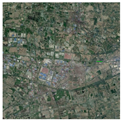 | Type E | The grading of LAI and LFI is −2, when the grading of LSI is −1. | 0.048 | 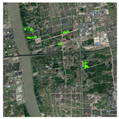 |
| Type B | The grading of LAI is −2, when the grading of LSI and LFI is −1. | 97.357 | 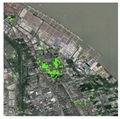 | Type F | The grading of LSI and LFI is −2, when the grading of LAI is −1. | 2.644 | 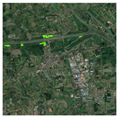 |
| Type C | The grading of LSI is −2, when the grading of LAI and LFI is −1. | 502.990 | 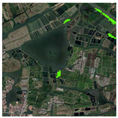 | Type G | The grading of LAI, LSI and LFI is −1. | 962.478 | 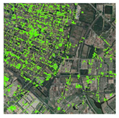 |
| Type D | The grading of LAI and LSI is −2, when the grading of LFI is −1. | 97.403 | 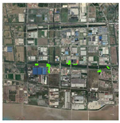 | Type H | The grading of LAI, LSI and LFI is −2. | 0.219 | 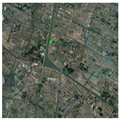 |
Publisher’s Note: MDPI stays neutral with regard to jurisdictional claims in published maps and institutional affiliations. |
© 2021 by the authors. Licensee MDPI, Basel, Switzerland. This article is an open access article distributed under the terms and conditions of the Creative Commons Attribution (CC BY) license (https://creativecommons.org/licenses/by/4.0/).
Share and Cite
Huang, J.; Wang, Y.; Zhang, L. Identifying Spatial Priority of Ecological Restoration Dependent on Landscape Quality Trends in Metropolitan Areas. Land 2022, 11, 27. https://doi.org/10.3390/land11010027
Huang J, Wang Y, Zhang L. Identifying Spatial Priority of Ecological Restoration Dependent on Landscape Quality Trends in Metropolitan Areas. Land. 2022; 11(1):27. https://doi.org/10.3390/land11010027
Chicago/Turabian StyleHuang, Junda, Yuncai Wang, and Lang Zhang. 2022. "Identifying Spatial Priority of Ecological Restoration Dependent on Landscape Quality Trends in Metropolitan Areas" Land 11, no. 1: 27. https://doi.org/10.3390/land11010027
APA StyleHuang, J., Wang, Y., & Zhang, L. (2022). Identifying Spatial Priority of Ecological Restoration Dependent on Landscape Quality Trends in Metropolitan Areas. Land, 11(1), 27. https://doi.org/10.3390/land11010027






